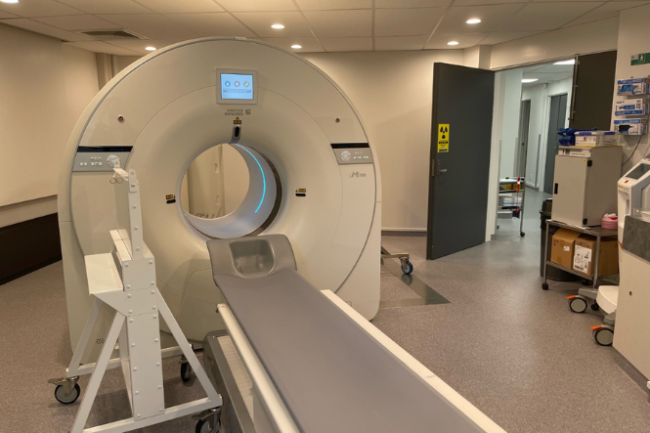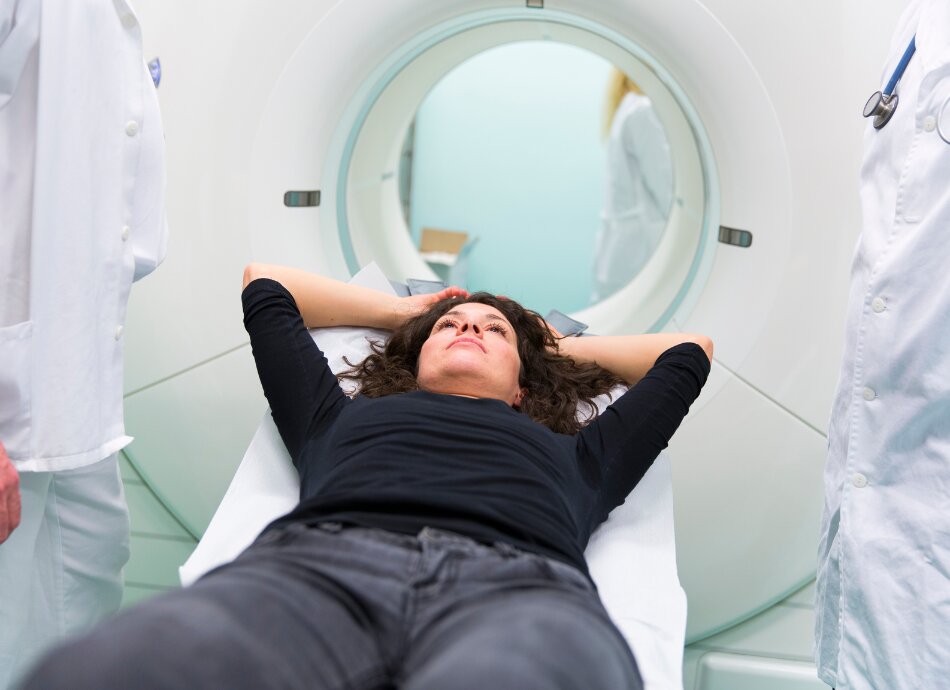A PET scan uses a special type of camera that detects radiation and a small amount of a radioactive substance (called a radiotracer), to pick up abnormal function or disease in your tissues and organs. It's usually used to examine your entire body from skull to thighs, although some PET scans can be limited to certain organs such as brain or heart only. Different types of radiotracers are used depending on the reason for the scan.
During the test, the radiotracer is injected into a vein in your arm. As it travels around your body it accumulates in areas where there is a higher level of metabolic activity. If a disease specific radiotracer has been used, it will accumulate in parts of the body where there is a high concentration of the disease being examined. The radiation released by the radiotracer is detected by a PET camera and a highly sophisticated computer reconstruction then produces images of the area being examined.
Images from the PET scanner are generally combined with those of a CT scanner (PET/CT) used at the same time during the procedure. The combined images enable more accurate detection and location of disease.
A PET/CT scanner looks like a short tunnel which contains both the PET camera and the CT scan detectors. You will slowly move through the tunnel over a period of 15–30 minutes while the PET camera detects the radiation from your body. A PET/CT scan is carried out by a trained nuclear medicine technologist working with a radiologist or nuclear medicine specialist who specialises in interpretation of PET/CT images and generates a report for your specialist.
Image credit: Dr Remy Lim






